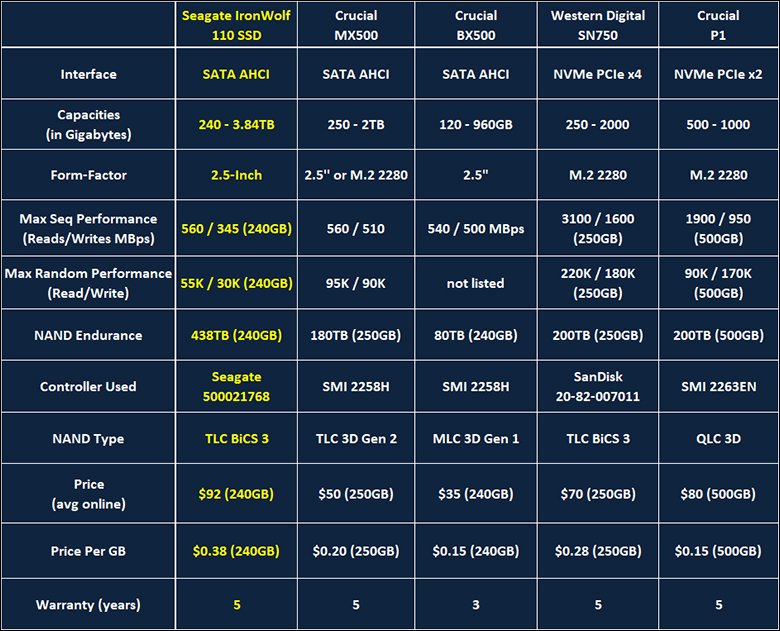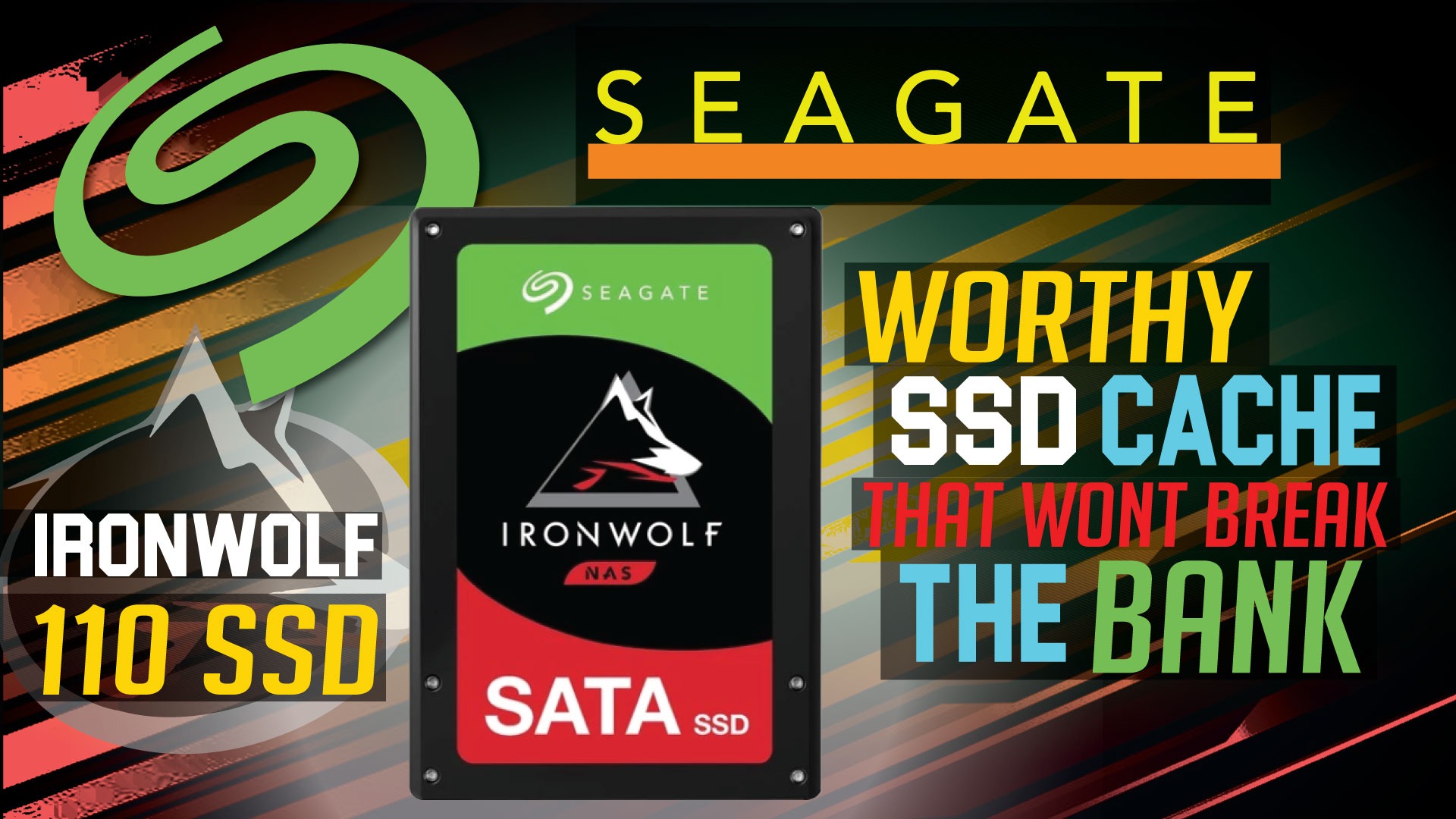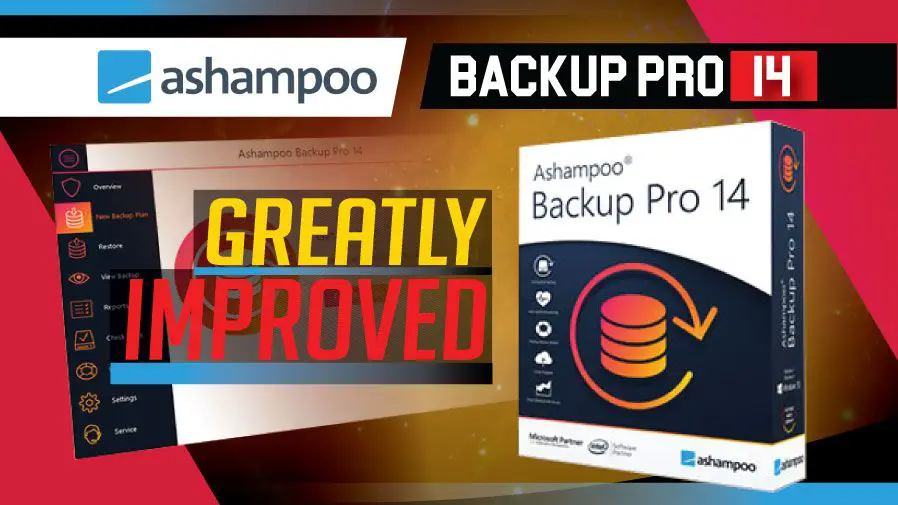The lowly Network Attached Storage device really does not get enough love these days. While the old saying ‘RAID is not a backup’ is indeed true, as a secondary backup (or for ease of collaboration) a NAS running a Raid 6/Raidz2 array it is pretty darn hard to beat. This is why Small Office and Home Office (‘SOHO’) as well as Small and Medium Businesses (aka SMB) all have at least one. They might not be able to afford a full-blown Storage Server (aka NAS for serious workloads) they still want that ‘Z drive’ peace of mind. Sadly, the typical NAS appliance (or if you have an IT admin worth their paycheck a full blown computer system configured as a NAS) do have a lot of drawbacks. Namely lack of performance when it comes to small files… that only gets worse when more than one or two people are accessing the array at the same time. This is where the new IronWolf SSD 110 series comes into play, and why we are placing it under the microscope today.
The reason for the typical NAS appliance offering abysmal performance is three-fold. Firstly, they are bottlenecked by 1Gbps / 125MBs NIC interface. There is not much you can do about this beyond going to 10Gbps (and the huge cost infrastructure upgrades that go along with it). The next is even if you are running FreeNas/OpenMediaVault/etc on a ‘real’ PC and not a NAS appliance, they still rely upon hard disk drives to handle the I/O requests. While yes Seagate and their IronWolf and IronWolf Pro series has made great strides in the performance department even they are still slow compared to a Solid-State Drive. This is why many smart people and administrators add in a solid-state drive to act as a cache buffer (aka ‘SSD Cache’) to an RAID array of hard drives. This SSD cache, as the name suggests, will not only handle real-time write requests (and then be moved over to the HDD RAID array) but can be preloaded with commonly accessed files for improved read performance. This not only boosts all file size and random IO performance but actually lowers CPU over-head and is thus a win-win scenario.

This does of course sound like a match made in heaven: HDD capacity with SSD performance. The fly in the ointment is of course NAND wears out. TLC NAND wears out faster, and yet finding home or even SOHO orientated SSD models that use MLC and are good is becoming rather difficult to say the least. This is why the search for the ‘perfect’ NAS SSD is nearly Quixotic in nature, unless you can afford the cost of ‘Enterprise’ Solid State Drives (aka ‘first born child’ expensive) that is. This all changes with the IronWolf 110 SSD series. Not only does this series come in capacities from 240GB to a whopping 3.84TB, they also come with asking prices which are downright reasonable. For example, the 240GB we will be reviewing today only costs approximately $92 (USD) and yet is more than large enough for the typical home NAS appliance and possibly even SOHO NAS server.
In this review, we will go over how Seagate is able to offer an actually good SSD cache series that can be relied upon to not die in short order; but for the time being it boils down to an excellent design that has multiple low-level tweaks to ensure its TLC NAND can be both long lived as well as fast. Yes, that is not a typo, for the first time in recent memory ‘TLC NAND’ and ‘great option for NAS’ can be used in the same sentence with out being ironic. Needless to say, this is indeed a very exciting series and one that promises to revolutionize this often-overlooked corner of the marketplace.










